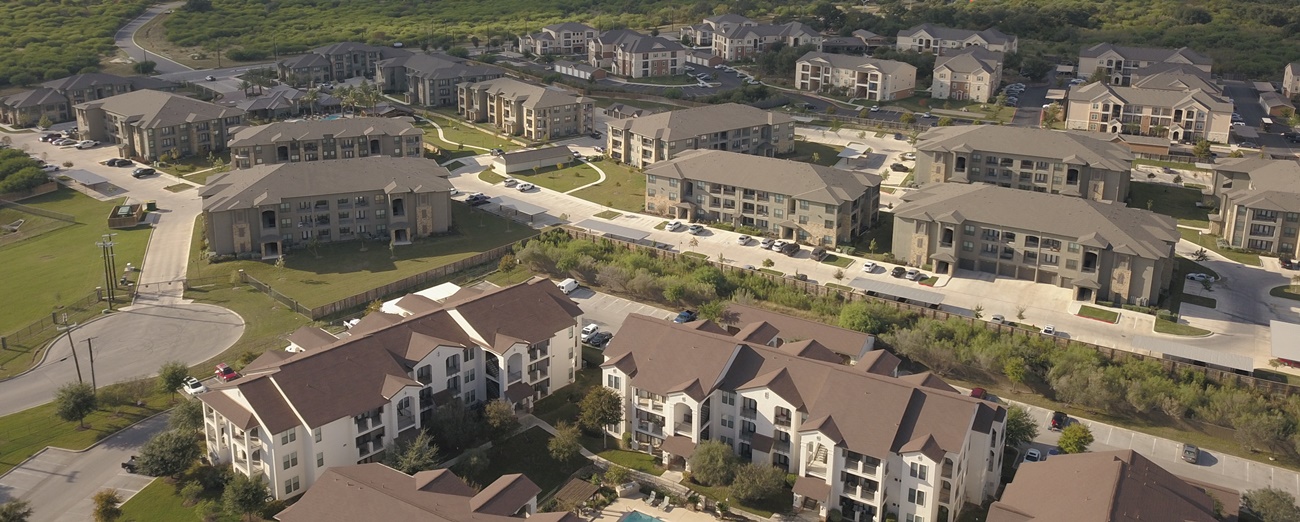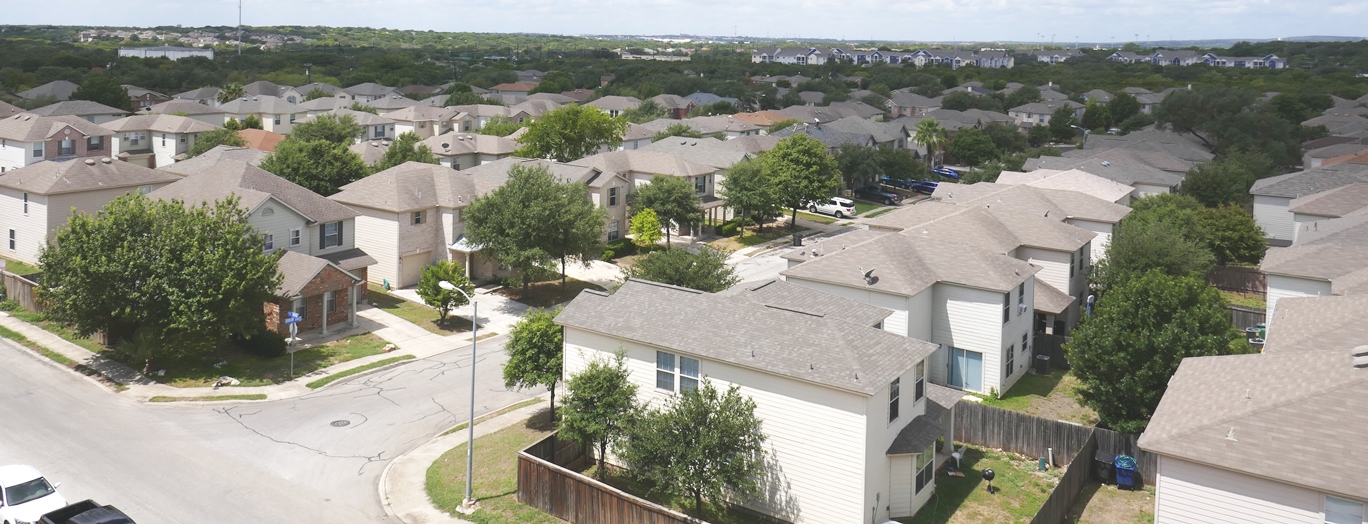Plan Framework
Housing
Housing Snapshot
The UTSA Area Regional Center household growth has been rapid in recent years, growing at 5.7% per year from 2000 to 2010, and 3.1% per year from 2010 to 2016. Characteristics of households in the UTSA Area vary considerably from the region overall; much of this is due to the large student and school-oriented population. A significant portion of the population (31%) is student-aged and there is a greater than average concentration of young adults. The average household size in the area is 2.29, lower than the city average of 2.73. Fifty-six percent of households are non-family, compared to only 35% in the city and 31% in the San Antonio – New Braunfels Metropolitan Statistical Area (MSA). The UTSA Area population is much younger than the region overall; the median age in the area is 24.7 years, compared to 33.7 in the city. Despite the high number of students who typically have lower incomes, incomes of residents in the UTSA Area are higher than the city overall, and similar to the MSA.
The composition of housing stock in the UTSA Area is significantly different from the region overall. Only 40% of units are detached single-family homes, compared to 64% in the city. There are also large differences in housing tenure between the Regional Center and the city. Sixty-three percent of housing units in the UTSA Area are renter-occupied, compared to 47% in the city.
Average home values in the UTSA Area are higher than the county average. The average assessed single-family home value is $247,000, which is 152% of the county average value of $163,000. The average home sale price for homes in the Regional Center in 2016 and 2017 was $228,048, which is slightly higher than the county average of $221,274. The same difference exists for rental housing. Average rent in the UTSA Area is $1,200 per month, or $1.28 per square foot, much higher than the county average of $921 per month ($1.11 per square foot). The difference is less significant for new rental development. New projects (built in 2010 or later) in the UTSA Area have an average rent of $1,388 per month ($1.42 per square foot), compared to the county average of $1,226 per month ($1.38 per square foot).
Twenty-one percent of homeowners in the UTSA Regional Center are cost burdened (meaning they pay more than 30% of their income on housing), which is lower than the county-wide average of 23%. Half of renters are cost burdened, which is higher than the county-wide average of 45%. Households with lower incomes (below $35,000) are more likely to be cost burdened in the UTSA Area Regional Center. However, given the large student population, the rate of cost burden may be overstating the impact on current renter households, as many student household’s incomes are supplemented by loans and/or parent support. The cost of housing in the UTSA Area is higher than the other areas of the City, which has likely limited the ability of workers in the service sectors from living near their jobs in the area. These workers predominately commute into the area for work. While housing affordability may not be a significant issue for current homeowners in the UTSA Area, it is likely a barrier to potential renters and buyers within the local workforce.
Housing issues and strategies were prominent topics of community and stakeholder input throughout the planning process. Community Meeting and Planning Team Meeting Summaries are available in the documents library of the UTSA Area Regional Center Plan webpage.
Housing Challenges in the UTSA Area Regional Center
The UTSA Area is growing quickly and is attracting a variety of housing developments. However, the majority are either single-family homes or large multifamily apartment projects, leaving out options that might appeal to or be affordable for a wider range of households. Even accounting for topographical and floodplain constraints, there is an estimated capacity of approximately 3,800 acres for residential development on opportunity parcels in the UTSA Area Regional Center. Growth forecasts for the area range from 16,000 to 35,000 new units by 2040 which can easily be accommodated within the Regional Center.
As demand continues to grow, there is a need to create affordable housing options along with the market-rate development in order to provide housing to the workforce in the area, particularly for retail and service workers. There are three main challenges in the UTSA Area Regional Center related to housing:
- Integrating housing with commercial and employment areas: National market trends are driving more office development to areas with a mixture of uses. The UTSA area has an opportunity to better integrate housing with employment uses.
- Diversifying housing options: Housing options in the UTSA Area are predominately single-family homes and mid-rise apartment complexes. There are a variety of housing types such as duplexes, courtyard apartments, townhomes, and condos that are supportable and would increase available options and improve walkability.
- Integrating student housing into the surrounding neighborhoods and mixed-use areas: There is a significant amount of student housing in the area, but it is predominately isolated from neighborhoods and other uses. The land use pattern separating student housing projects away from retail areas and from the campus itself increases traffic demands and concentrates issues related to student housing.
Recommendations
Housing recommendations were developed based on the UTSA Area’s vision and goals and to address the housing-related challenges identified during the planning process. Specific strategies to implement these recommendations can be found in the Implementation section of the plan.
Recommendation #1:
Increase the diversity of housing options within the UTSA Area Regional Center to support a more diverse population.The UTSA Area needs a greater variety of housing options to allow a greater diversity of residents and for more people to live and work in the Regional Center. There is a lack of medium density housing options such as attached single-family homes, duplexes, and townhomes. There is also a lack of diversity among multifamily options, which should include both smaller, courtyard apartment developments as well as taller, higher density projects near and integrated into commercial and employment areas. A greater diversity of housing will allow for more residents of various ages, family status, and income range to live in the area, as well as provide more affordable housing opportunities for prospective residents that are not students.

